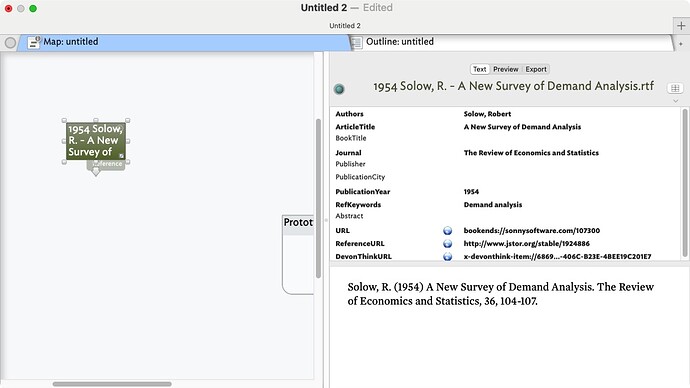I have been experimenting with ways to integrate Bookends, DevonThink and Tinderbox, each of which has great strengths.
One method I have tried is the following. I select a reference in Bookends and then import it into DevonThink Pro using one of the built-in importers. This creates an RTF file, the text of which contains a link to the PDF corresponding to the reference, together with the contents of the Bookends Notes field.
I then created a new empty Tinderbox and I drag and drop the RTF file from DTP into it. A new note appears, containing the contents of the RTF file. Then, without my doing anything, the beachball spins for a long time, and the Reference prototype is created and applied to the Note. Not only that, but the body of the note is no longer the contents of the RTF but replaced by a bibliographic reference. Not what I wanted, which was to have the TB Note show the content of the RTF file. I was initially very puzzled by why things were happening to the notes without my doing anything.
My guess at what is happening is that, because the RTF created by DTP contains the Bookends URL in its metadata, TB automatically gets bibliographic data, but why should it get rid of the original content of the Note when it applies the Reference prototype?
My other question is whether TB contains the option, where there is a link to a file, to open with something other than the default RTF editor. “Open with …” or something like that? The reason is that if a file is located in a DTP database (as is the case with the SourceURL here), I would like to be able to open it in DTP. If I edit an RTF file in Nisus Writer (my default), DTP will not edit it at all. I could change my default RTF editor, but that is obviously not the ideal solution.
